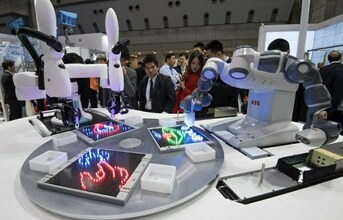
ABB and Kawasaki Heavy Industries are showcasing common collaborative robot operating interface. The common interface will also help address the shortage of skilled workers in many industries. In Japan for example, one person in five is within a decade of retirement.
Demand for collaborative robots has outpaced the rapidly-growing industrial robot market, as easier-to-use robots open doors to new users. The fact that collaborative robots can be programmed and operated by people without specialized training helps small and medium enterprises, in particular, to leapfrog traditionally longer industrial robot learning curves.
Collaborative robots (cobots) that can be operated by nearly any user can help offset labor shortages. Their flexibility to work nearly anywhere in a factory without safety barriers also makes them ideal for meeting sudden and unexpected demand peaks.
"The new state-of-the-art, industry-standard operating interface will accelerate the already rapid growth we see in collaborative robots," said Per Vegard Nerseth, Managing Director of Robotics for ABB. "It will give many new manufacturers flexibility and scalability, while providing more interesting jobs for the world's vital industrial workforce."
The interface is a result of the collaboration between ABB and Kawasaki announced in November of 2017, designed to share knowledge and promote the benefits of collaborative automation, in particular dual-arm collaborative robots. It includes a simplified human-robot interface with intuitive, smartphone-like navigation and icons.
END



























